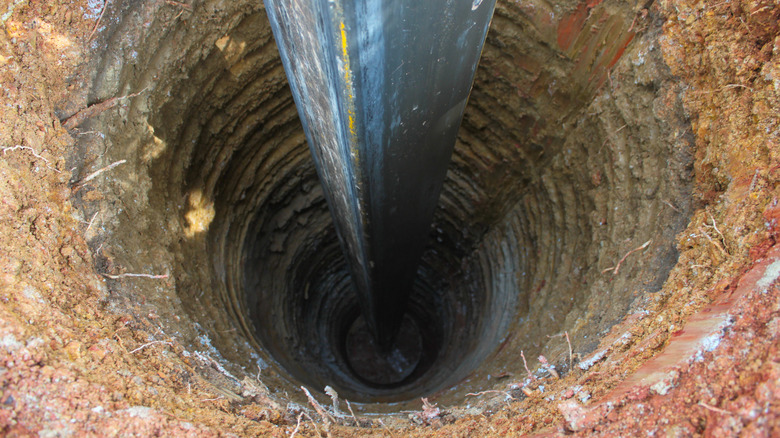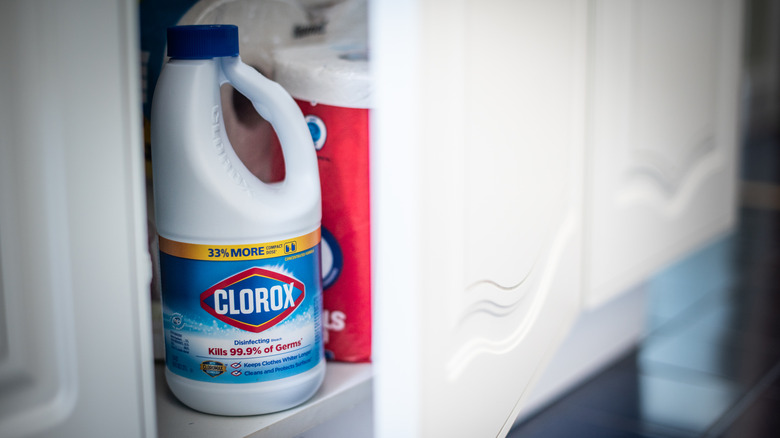What Happens When You Put Too Much Bleach In Your Well
If you own a home that has well water or plan on purchasing a property that has a well, there are a few steps you should take to make sure that it is maintained. Around 13 million homes across the U.S. have wells, per the United States Environmental Protection Agency. Some essential factors you may want to consider are making sure that the water is safe to drink, sourcing out the well's records so that you can maintain it properly, and making sure that the well isn't placed near the septic tank, according to Bob Vila. Testing your well at least once a year is so important, since this is water you are drinking and using to shower and bathe.
The University of Rhode Island Water Quality Program notes that a homeowner may need to disinfect their well if it shows high bacteria levels after being tested or after a flood. However, read on to find out what can happen if you use too much bleach in your well.
If you overdid the bleach, here's what can happen
Simple Pump, a company providing well water pumps, explains that disinfecting your well can be DIYed. However, there are several instances when you may want to consider hiring a professional since you'll be working with electricity, water, and chemicals. The company notes that there are also respiratory hazards to think about.
Now that we've gotten all of the safety issues out of the way, how much bleach should you put in your well, and what happens if you overdid it? To calculate the proper amount of bleach, the American Ground Water Trust advises checking local state codes before getting started on your well. Generally, you will look at the well's depth and consider how much water is stored to find the right amount of bleach. According to AskingLot, if you put too much bleach in your well, it can destroy the good bacteria found in the well, which can be a significant problem! The company also says that you should dilute the bleach with water so the pipes do not get ruined.

